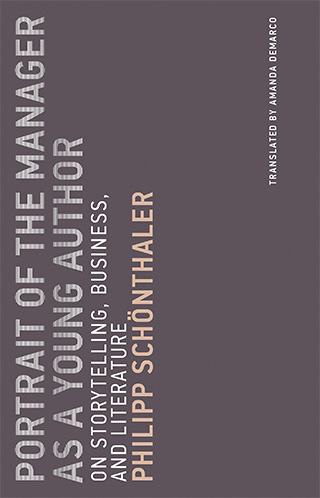“We Really Love Working Here”: On Corporate Storytelling

Being a storytelling consultant must be fascinating. In any case, they meet a great number of people and hear a great number of stories. And yet the job also has its drawbacks and is no safeguard against disillusion. “[A] number of times I go into organizations,” says storytelling coach Shawn Callahan, author of “Putting Stories to Work: Mastering Business Storytelling,” “and they talk about stories but actually they don’t use stories, it is frustrating, drives me crazy.”

The problem doesn’t lie in misgivings about storytelling. On the contrary, businesses are convinced of its power — but they don’t understand a thing about it. And so the same routine plays out again and again: Callahan is welcomed enthusiastically. First they want to show him what they’ve already put together themselves. Full of expectation, they seat him in front of a computer screen. In the clip that plays, an employee appears “sitting on a desk, speaking to the video camera. And the employee starts off by saying, hey there, this company, it is fantastic to work for, we really love working here, there is this great cafeteria, we have fantastic life plans, insurance, et cetera.” Before the video is over, those in charge expect the coach to give it two euphoric thumbs up and clap them on the shoulder in approval. He then finds himself in the disagreeable position of having to explain to his clients that the fact that someone is talking doesn’t mean they’re telling stories. That’s why “Spotting Stories” is the title of Callahan’s first YouTube tutorial, in which he helps his clients identify the elements that make a story a story.
His frustrations mirror those of the theorists. Roland Barthes writes of narrative: “Like life itself, it is there, international, transhistorical, transcultural.” And that is precisely the problem. “Is such universality a reason for us to infer narrative’s unimportance?” The endless flood of stories thwarts any attempt to establish binding criteria.
If you cannot reliably identify the object of your scholarship, it’s difficult to claim that you are applying scholarly methods.
Since Aristotle there have been plenty of attempts at a definition, but the lack of consensus is all the more significant in light of the fact that neither narratology nor culture theory has been able to resolve it. “Storytelling … suffers from one of the major obstacles still encountered in KM [knowledge management], namely, reaching agreement among practitioners and scholars about what storytelling is and what it is not,” write Kimiz Dalkir and Erica Wiseman in their survey of organizational storytelling. This raises doubts about the scientific nature of storytelling, resulting in hesitation and confusion. If you cannot reliably identify the object of your scholarship, it’s difficult to claim that you are applying scholarly methods. But storytelling is suited to the ideal of scientific validity, particularly since scientific studies increasingly indicate a neuronal basis for storytelling in the human brain. Thus, for many, the search for a definition represents the discipline’s Achilles heel.
When oceanographer and professional storyteller Kendall Haven led a workshop at the NASA Goddard Space Flight Center in Greenbelt, Maryland, he was confronted with this dilemma. His hosts challenged him to prove his claim that narrative is the best medium for transmitting knowledge — which in this case meant better than a scientific presentation. By that point, Haven already had many years of experience to draw on. He had organized story-writing workshops for 45,000 teachers and 250,000 students and had released five audio tapes and 28 books about storytelling, including three prize-winning ones: “Write Right” (1999), “Super Simple Storytelling” (2000), and “Get It Write” (2004). But the challenge to prove the effectiveness of his methods apparently touched a sore spot, and so the storyteller withdrew into seclusion.
He claims he read more than 100,000 pages of scholarly literature; over 350 books and more than 70 qualitative and quantitative studies, which in turn referenced 1,500 articles. He combed through 15 different disciplines: neurobiology, cognitive research, developmental psychology, clinical psychology, neurolinguistics, pedagogy, information theory, knowledge management, organizational theory, anthropology, narratology, neural net modeling, medicine, narrative therapy, and management storytelling. Persuasive proof exists for the power of storytelling, but sound definitions can’t be found.
In “Story Proof: The Science behind the Startling Power of Story” (2007) Haven unceremoniously turns the line of argumentation on its head: Instead of linking individual stories to a general definition, he began with the results of scientific research, which stated that the human brain was evolutionarily and sociobiologically preprogrammed to think in narrative structures, and from this discovery he derived a definition of the vital ingredients for a story. The circular reasoning of his argument is one problem; the other is Haven’s conclusions, which are strikingly simple, not least because his definition makes use of the term, “narration,” it is supposedly trying to define: “a detailed, character-based narration of a character’s struggles to overcome obstacles and reach an important goal.”
Perhaps Haven himself distrusts this definition; that would explain the fastidious bookkeeping regarding the number of workshops and the reams of literature consulted. He wouldn’t be alone in the hope of pushing through to a point at which quantity would be transformed into quality; ironically, it’s a hope he shares with the data evangelists, who would like to do away with the words that Haven is trying to vindicate.
But the impulse to pin down the definition of narrative harbors other pitfalls as well. Callahan hints at this, after making his own list of four elements that constitute a story: time, place, character, and surprise. After providing instructions for how to reliably identify stories in everyday situations, he leaves his audience with a warning: “Let me right now tell you, it is a bit of a curse as well as a benefit, because from now on, you are going to see them all over the place, you’ll be spotting them left, right and center.” Which brings us back to Barthes and his fear that the greatest threat to the story is its ubiquity. If everything is narrative, the meaninglessness of narrative is more or less implied.
Philipp Schönthaler is a Stuttgart-born writer. This article is excerpted from his book “Portrait of the Manager as a Young Author.”

